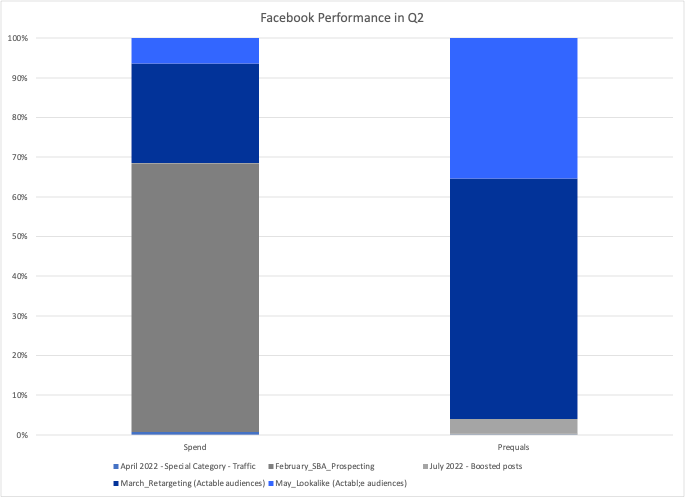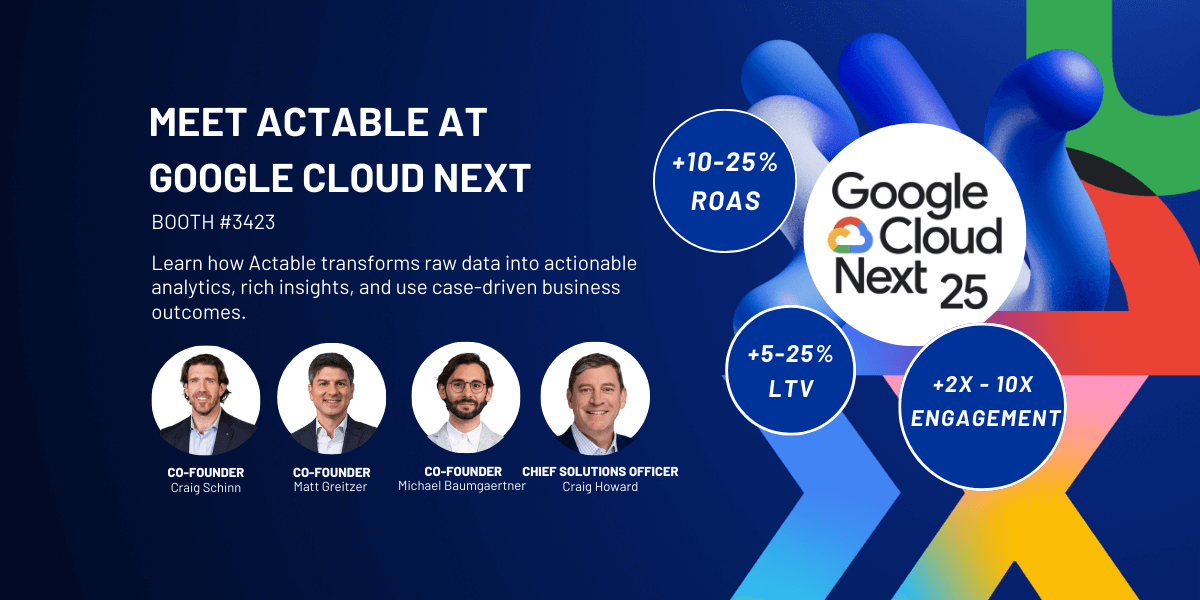I’m often shocked at how brands struggle to use first party data effectively inside the free-to-onboard walled gardens of Google, Facebook, Amazon, and others. Even clients with CDPs, ESPs, and reverse ETL solutions struggle to do this continually. Recently, I was working with the team here at Actable to assemble a QBR with one of our Financial Services clients. In pulling the data together, the Actable Consulting team looked at the percentage of the client’s spend that was against first party audiences from their CDP and lookalikes thereof in Google & Facebook.
For Facebook, the number was just over 30%.
For Google, it was under 10%.
At Actable, we believe that accurate first party data, correctly & conscientiously deployed, enables more powerful and relevant marketing than business as usual approaches. We were surprised at the low numbers. The team investigated why the client wasn’t spending more. The Cost Per Lead for this client who is in the lending space was actually higher than their traditional, business as usual approach. The client was pushing for volume.
When Actable is at its best, we rapidly move clients to business outcomes in their channels with a cross functional effort of use case strategy, marketing operations know-how, analytical acumen, and engineering support. In this case, the initial data suggested that we had not lived up to that promise. What did work? What aren’t we seeing?
When we expanded the investigation using a combination of data from the client’s CRM, CDP, and Google Analytics, we noticed that although only 30% of the spend on Facebook were on 1st party and 1st party-derived audiences, they were 96% of the applications that actually qualified:

That signal was lost when optimizing only for the lead. A similar story was true for Google Ads.
It’s 2022. Why is this still happening when we’ve known this for a decade or more? Client teams & their agencies need help with ongoing data literacy and data activation. The hands-on-keyboard users buying ads are often not incented to dive deep into performance to understand not just the reporting native in the ad tools – but to truly understand the customer’s journey.
If you’re a brand who is not looking at insights from customer-level data about how campaigns and customer experiences are moving customers to deeper relationships with you, you are missing an important opportunity. Here’s what I recommend:
- Ensure that you have a customer view that can track and attribute how email, ads, and other marketing touchpoints influence conversion, retention, and lifetime value.
- Enable channel teams with data and/or audiences that comply with your information security policies.
- Look beyond the obvious data to understand what interaction points and targeting matters. It’s not always clear, and there may be interplay between channels. However, there’s almost always the opportunity to learn more.









